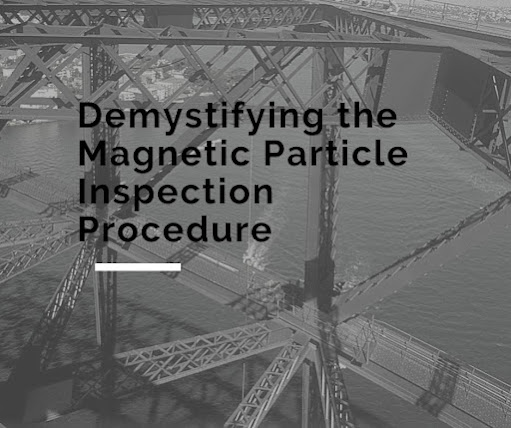Demystifying the Magnetic Particle Inspection Procedure
Magnetic Particle Inspection (MPI) is a widely used
non-destructive testing (NDT) technique employed to detect surface and
near-surface flaws in ferromagnetic materials. This procedure is a critical
tool in ensuring the integrity and safety of various components in industries
ranging from aerospace to manufacturing. In this article, we will delve into
the intricacies of the Magnetic Particle Inspection procedure, from preparation
to interpretation of results.
I. Preparation of the Test Surface
Before commencing the Magnetic
Particle Inspection, thorough preparation of the test surface is
crucial. This involves cleaning the surface to remove any contaminants, such as
dirt, grease, paint, or scale. The cleanliness of the surface is paramount as
any foreign material can impede the accuracy of the inspection.
II. Application of Magnetic Field
The next step involves inducing a magnetic field into the
test material. This can be achieved through the use of various methods:
a. Electromagnetic Yoke: An electromagnetic
yoke is a portable device that generates a magnetic field when activated. It is
often used for on-site inspections and is particularly effective for irregular
or difficult-to-access surfaces.
b. Permanent Magnets: Permanent magnets can
be used to create a magnetic field without the need for an external power
source. They are commonly employed in applications where a consistent magnetic
field is required.
c. Central Conductor: This method utilizes
a central conductor to induce a magnetic field into the test material. It is
effective for inspecting long, cylindrical components.
III. Application of Magnetic Particles
Once the magnetic field is established, magnetic particles
are applied to the surface of the component. These particles are typically
suspended in a liquid carrier, which allows them to adhere to the surface and
interact with any magnetic field leakage caused by surface discontinuities.
IV. Detection of Indications
As the magnetic particles adhere to the surface, they form
visible accumulations or indications at areas where magnetic field lines are
distorted. These indications highlight potential surface discontinuities, such
as cracks, inclusions, or other flaws.
V. Interpretation of Results
The interpretation of MPI results requires skill and
expertise. The inspector must differentiate between acceptable indications,
which may be a result of surface roughness or geometry, and actual defects.
This step demands a comprehensive understanding of the specific application,
material properties, and the expected types of flaws.
VI. Post-Cleaning and Documentation
After the inspection is complete, it is crucial to
thoroughly clean the test surface to remove any remaining magnetic particles.
This ensures that the component can be returned to service without any residual
particles causing issues. Additionally, detailed documentation of the
inspection process, including the procedure used, equipment calibration, and
inspection results, is essential for quality control and compliance purposes.
VII. Validation and Certification
The final step in the Magnetic Particle Inspection procedure
involves validating the inspection results and providing the necessary
certification. This certification serves as a record of the inspection
and attests to the integrity of the component.
Conclusion
The Magnetic Particle Inspection procedure is a meticulous
and critical process in the realm of non-destructive
testing. It plays a pivotal role in identifying surface and
near-surface flaws in ferromagnetic materials, ensuring the safety and
integrity of various components across industries. With proper preparation, application
of magnetic fields, interpretation of results, and thorough documentation,
Magnetic Particle Inspection remains an indispensable tool for quality
assurance and safety in engineering and manufacturing.


Comments
Post a Comment